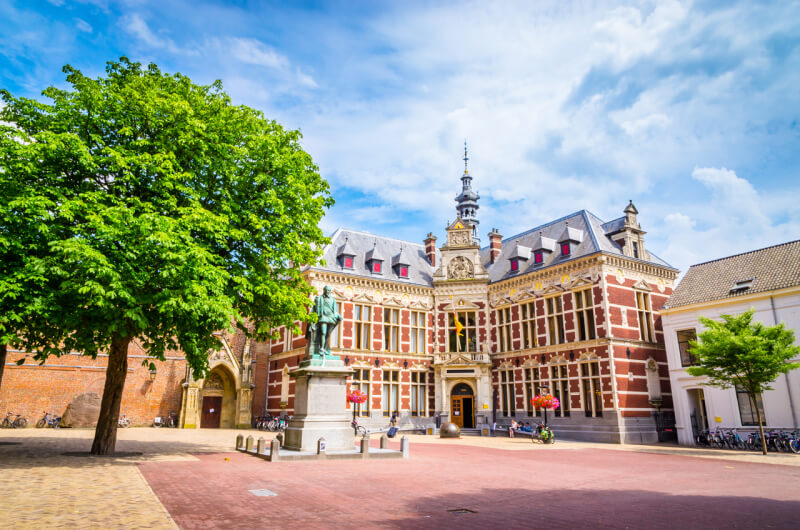‘s-Hertogenbosch (Den Bosch)

‘s-Hertogenbosch (literally meaning “The Dukes Forest”) is the capital of North Brabant province. It doesn’t normally get its full title though, instead being called Den Bosch (“The Forest”) by most.
‘s-Hertogenbosch was founded as a fortified city (first gaining city rights in 1185) and that heritage can still be seen today. Unlike many other Dutch cities, ‘s-Hertogenbosch also survived the Second World War relatively unscathed. And after World War II, although plans were made to modernise the old city by filling in the canals, removing or modifying some ramparts and reconstructing historic neighbourhoods, the central government declared the city a protected townscape. Because of this, most of the historic elements of ‘s-Hertogenbosch have been preserved. In addition to this, because the main ramparts are crucial in keeping out water, they have never been slighted and remain mainly intact, and the old city of ‘s-Hertogenbosch is still almost completely surrounded by continuous ramparts.
There are also a good many museums and galleries in ‘s-Hertogenbosch. These include Stedelijk museum ‘s-Hertogenbosch, a new museum of contemporary visual art and design; Jheronimus Bosch Art Centre, the miraculous world of Jheronimus Bosch, situated in the medieval centre of the Brabant’s capital where he was born and grew up, illuminates in different ways the life, thoughts, ideas and the works of the religious painter; the Oeteldonks Gemintemuzejum which lets you delve into the world of carnival with its permanent exhibition of masks, costumes, promotional material, coats of arms, shields and many other valuable objects from the rich history of carnival and ‘s-Hertogenbosch; as well as the Noordbrabants museum , the museum Zwanebroedershuis and STOK-Kruithuis.
Major Highlights
The Sint Jans kathedraal (Saint John’s Cathedral) is very much the pride of the city, the current structure was built between 1370 and 1529, but parts of the site date from the early 13th century, you can visit the cathedral and even climb the tower that is over 100 metres tall . The Town Hall is worth a visit, even if just to see the beauty of its architecture. ‘s-Hertogenbosch also has the oldest remaining brick house in the Netherlands, ‘de Moriaan’, which was built at the beginning of the 13th century.
One of the major highlights of ‘s-Hertogenbosch has to be its absolutely wonderful canal system, the Binnendieze, which flows underneath the city centre; the unique stillness of the water together with the magnificent bridge archways will have anyone delighting at its beauty. There are 5 different historical-cultural routes that you can follow, including 3 boat trips and 2 trips combining walking and travelling by boat.
The last, but most definitely not least, of the must-see attractions is situated just outside the centre of ‘s-Hertogenbosch: the Bossche Broek. This marshy ground once formed part of the defences of ‘s-Hertogenbosch, and was the reason for the cities nickname “The Invincible Marsh Dragon”. The Bossche Broek is home to a valuable assortment of plants, and is rich in birdlife, being a nesting area for many species. The sandy paths in the marsh are partly accessible and are very popular amongst walkers, cyclists and skaters.